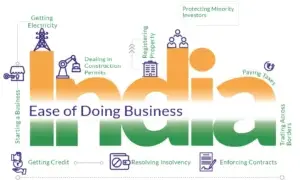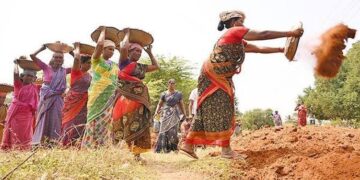If Kashmir had a national industry, it wouldn’t be tourism, handicrafts, or horticulture.
It would be grief.
Because for decades, Kashmiri politicians have made an art form out of commodifying tragedy. Mourning has been industrialized. Martyrdom monetized. Tombstones turned into podiums.
And the dead? Well, they vote. Loudly. Every election.
Let’s be clear: Kashmir’s mainstream political class has weaponized every death, every funeral, and every calendar commemoration into a billboard for relevance. It doesn’t matter whether the deceased was a militant, a civilian, a protester, a soldier, or a bystander – if they can be converted into political capital, the milkers arrive.
With garlands, cameras, and just enough sorrow in the voice to pass for sincerity.
There is nothing as a good as a martyr as the perfect campaign material. From the moment someone is killed in Kashmir, the real battle begins – not for justice, but for narrative ownership.
Leaders rush in like ambulance-chasing lawyers. The faster you reach the grieving family, the better the viral video. Someone dies, and within hours you’ll have a press conference, a tweetstorm, and if you’re truly seasoned, a “Day of Solidarity” named after them.
Justice? Compensation? Investigation? Those are background noise. Only noises.
It is better to turn graves as political stages than exhume the dead for fact-checking. Visit any “shaheed” graveyard, and you’ll likely find a local politician with a mic, a camera crew, and a selective memory. That is, if the LG administration doesn’t put the brakes on their well-oiled modus operandi. The good thing is the dead, conveniently, cannot refute anything. They can’t say, “Actually, we didn’t support your party.” Or, “Thanks, but you were in power when I was killed.” The optics you get with none of the accountability gives a narcist’s kick.
And killing and grieving on the same person over and over and again and again is an orgasmic feeling. Every election or any so-and-so day, Kashmir’s dead are exhumed – metaphorically, of course. Not for closure, but for votes.
There’s an eerie choreography to it:
- Remind the people of past massacres.
- Link them to a rival party, security force, or “outsider.”
- Shed a well-timed tear on a Facebook Live.
- Promise that, this time, you’ll fight for justice.
Kashmir’s political class has taught the world how victimhood could be turned into a failure-proof career strategy. Some Kashmiri leaders have built entire careers out of personal or familial loss. Tragedy becomes a legacy. And legacy becomes entitlement. Entire political dynasties have emerged not from ideologies, but from obituary columns.
It’s not that grief isn’t real. It is. Deeply so. But when every tragedy becomes a springboard for a Rajya Sabha or an Assembly seat or a TV interview or a Tweet, most of which look stale now, and the Tweeter the stalest, something is deeply rotten.
Look at the approximation of the dead that have been milked so far, and nothing, absolutely nothing, has been done for the families each has left behind.
These are conservative estimates of how many deaths have been publicly invoked by Kashmiri politicians but left unserved by governance, justice, or policy:
- Civilian deaths in militancy-related violence: 15,000+
→ Used in speeches? Often. Helped their families? Rarely. - Dead militants romanticized for public sympathy: 22,000+
→ No rehabilitation for families. Just posthumous labeling. - Massacre victims (Gaw Kadal, Sopore, Bijbehara, Wandhama, etc.): 250+
→ No prosecutions. No commissions. Just annual homage. And since the 370 abrogation, not even that. - Enforced disappearances: 8,000+
→ Used in manifestos. Truth & Reconciliation? Still pending. Most of mothers died waiting for their children to return. - Political killings (all parties): 1,000+
→ Families mostly abandoned. Used for electoral martyrdom. - J&K police and SPOs: 1,700+
→ Praised. Then forgotten. Their children? Still waiting. - Pandits killed in 1990s: 600+
→ Invoked in Delhi. Ignored in Srinagar. And then a Pandit; who is a Pandit? Duh! - Youth killed in 2008, 2010, 2016 uprisings: 300+
→ Their photos circulate. Their parents wait. And those who milk them take turns being in power.
These are not just statistics. These are broken families. Orphaned children. Widowed mothers. Parents who died waiting for someone to do more than “condemn” their loss.
There is a silver lining though. Something. Something has changed. Kashmiris, especially the young, are not buying it anymore. They don’t want leaders who weep on camera. They want those who fix the roads, get jobs created, clean up drug addiction, and tell the truth.
Martyrs deserve memory, not manipulation. The dead deserve dignity, not deployment in dirty politics.
So, to all those milking the graveyards: the milk has soured. You will sour soon, God willing. You will not rot in hell; you must rot here. And the dead must watch and rejoice.




